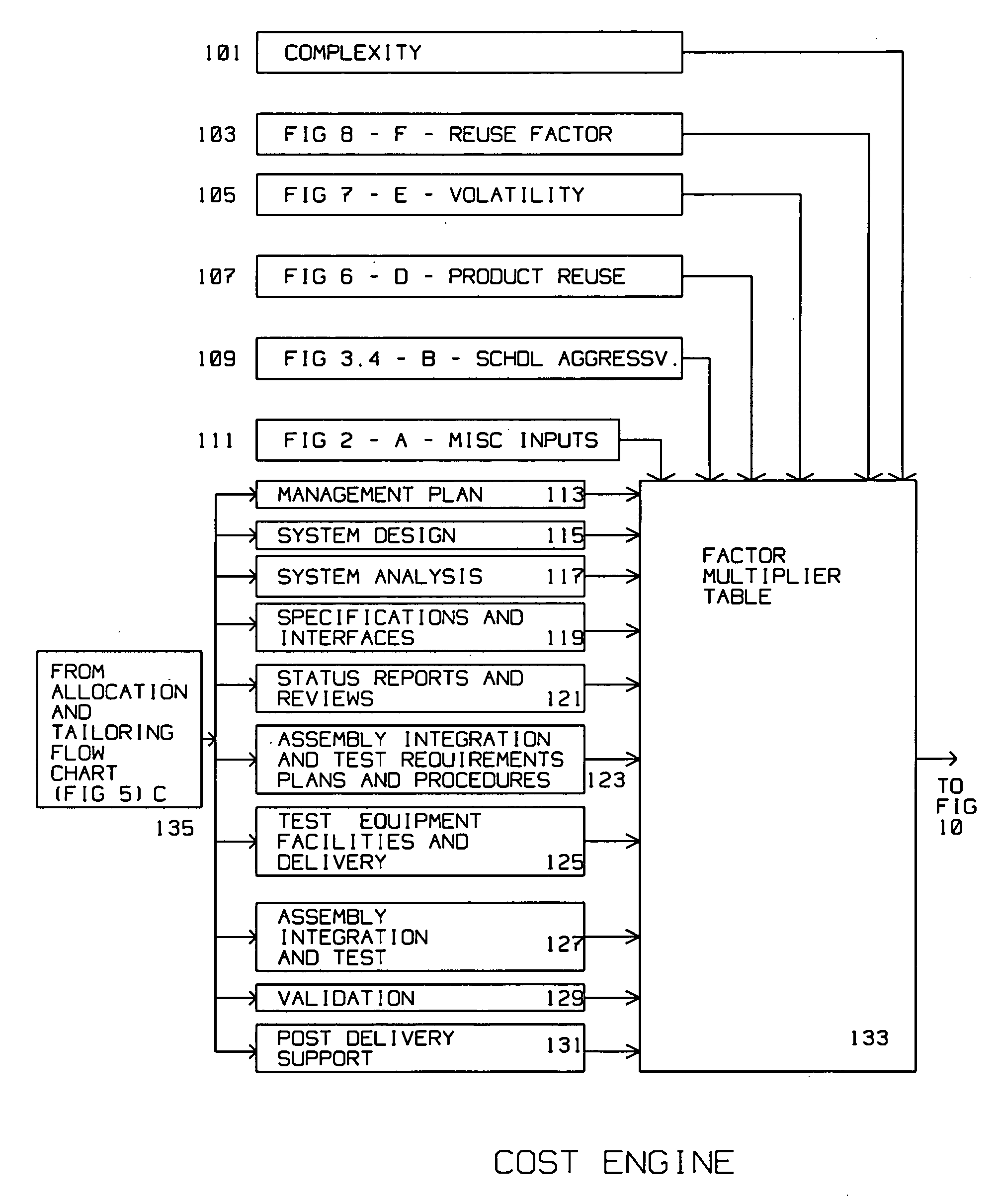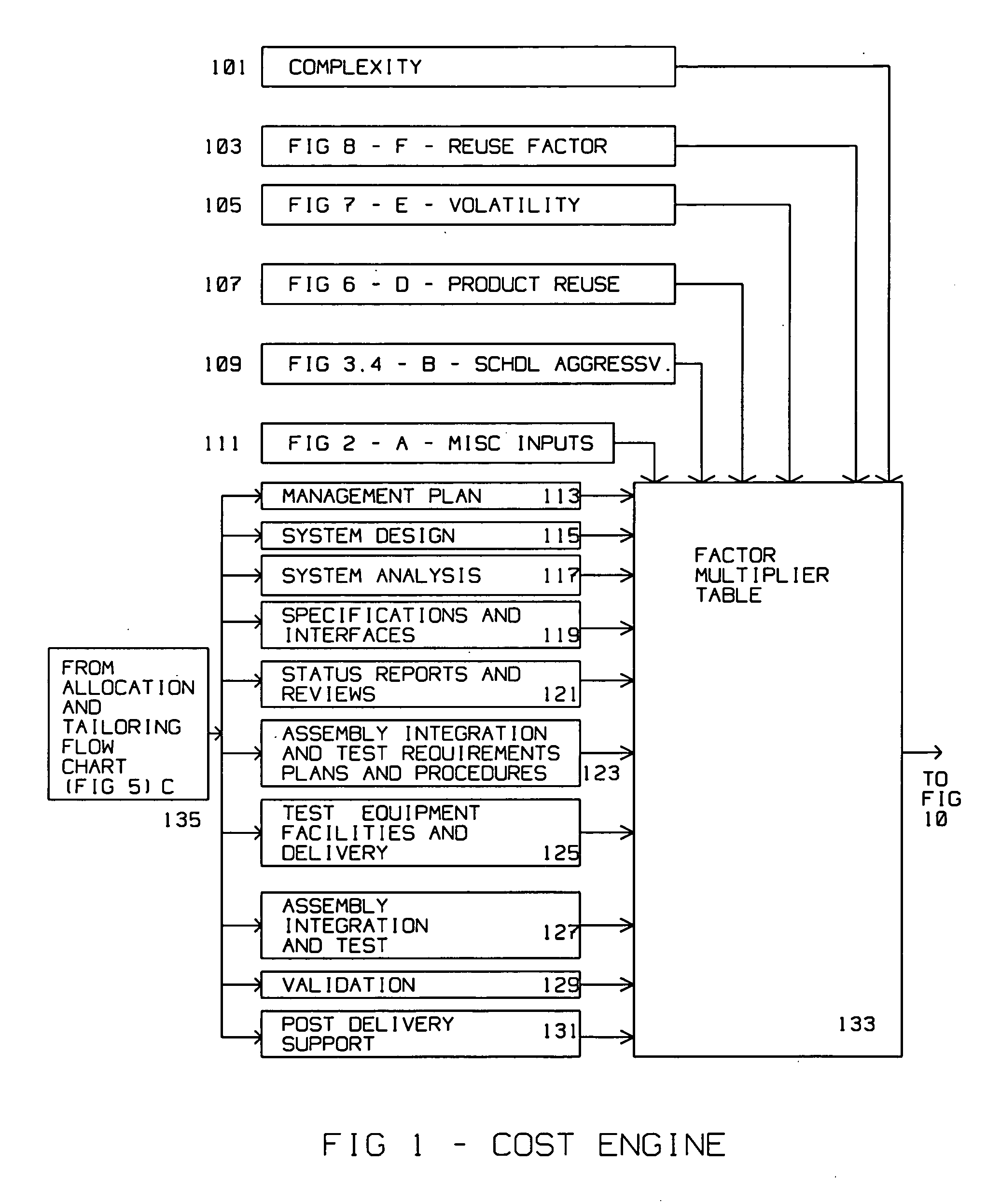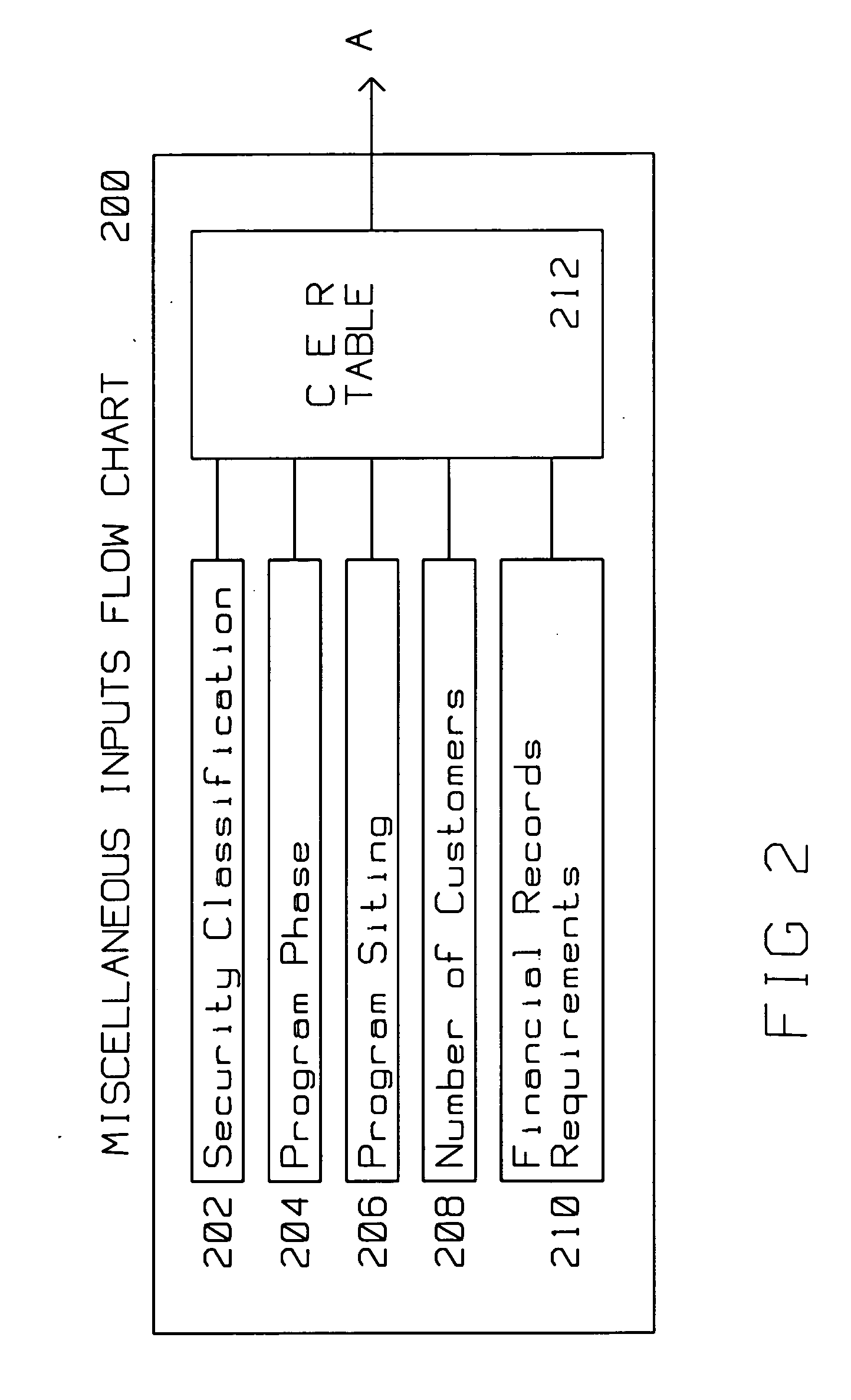Systems engineering parametric cost model
a parametric cost model and system engineering technology, applied in the field of parametric cost models, can solve the problems of reducing the overall utility of the model, lack of methodical approach, and insufficient accuracy of the model generated by prior art methods
- Summary
- Abstract
- Description
- Claims
- Application Information
AI Technical Summary
Benefits of technology
Problems solved by technology
Method used
Image
Examples
Embodiment Construction
[0027] This invention describes a method for estimating the cost of completion of a new program. The program has hardware / software, systems development, new and old systems / subsystems (elements). The estimated cost of completion of the new program is computed for the end of a time interval of the new program. A plurality of tasks need to be completed for said new program. The new program also has program phases. Some of the new elements can be derived or be based on old, existing elements from an old, previous program. The tasks to be completed are identified at the start of the cost estimation process. The overview of the method for estimating the cost of completion of a new program is shown in FIG. 1.
[0028] The first step is identifying particular tasks relevant to the new program, including those based on old programs having similar characteristics. A typical, exemplary list of such tasks, relevant to a major program are the following 10, as detailed in FIG. 1. These tasks will ...
PUM
 Login to View More
Login to View More Abstract
Description
Claims
Application Information
 Login to View More
Login to View More - R&D
- Intellectual Property
- Life Sciences
- Materials
- Tech Scout
- Unparalleled Data Quality
- Higher Quality Content
- 60% Fewer Hallucinations
Browse by: Latest US Patents, China's latest patents, Technical Efficacy Thesaurus, Application Domain, Technology Topic, Popular Technical Reports.
© 2025 PatSnap. All rights reserved.Legal|Privacy policy|Modern Slavery Act Transparency Statement|Sitemap|About US| Contact US: help@patsnap.com



